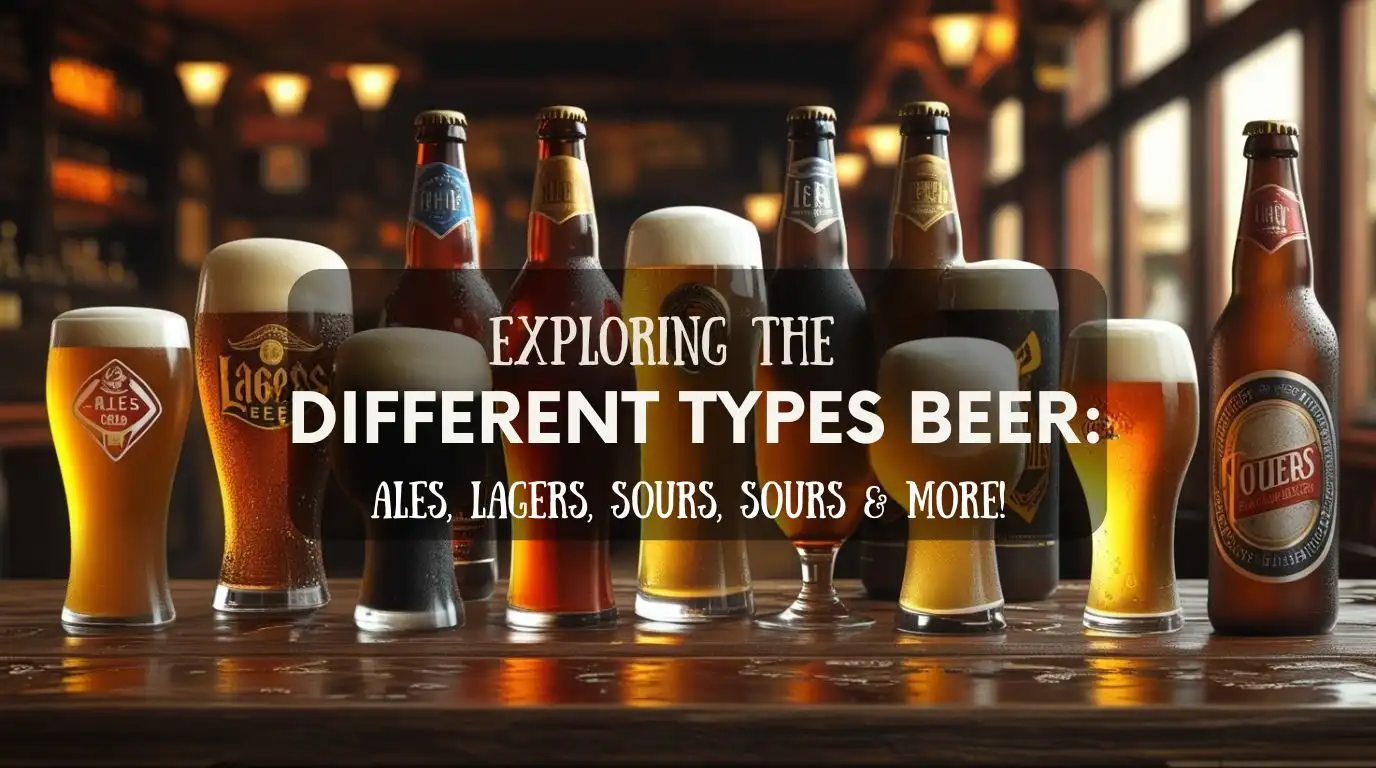Beer, one of the world’s oldest and most widely consumed alcoholic beverages, comes in a vast variety of styles and flavours. With a history dating back thousands of years, beer has evolved into a diverse range of brews, each offering unique characteristics influenced by ingredients, brewing techniques, and regional traditions.
Understanding the different types of beer can seem overwhelming at first, but once you grasp the fundamental categories, it becomes easier to navigate the world of craft beers and international brews.
What Are the Main Types of Beer?
Beer is primarily divided into two broad categories: Ales and Lagers. Nearly all beer styles fall under one of these categories, with some exceptions, including hybrid styles. The classification is based on the type of yeast used and the fermentation temperature. These factors significantly impact the beer’s flavour, aroma, and mouthfeel.
- Ales: Brewed with top-fermenting yeast (Saccharomyces cerevisiae) at warmer temperatures (typically 60–75°F or 15–24°C). In top fermentation, the yeast rises to the surface of the beer during fermentation, forming a thick, foamy layer. This process allows for a faster fermentation time and often results in beers with more complex, fruity, and spicy flavours. Ales tend to have a fuller body and a slightly higher alcohol content due to the warmer fermentation environment, which encourages the yeast to produce a wider range of aromatic compounds.
- Lagers: Brewed with bottom-fermenting yeast (Saccharomyces pastorianus) at cooler temperatures (typically 45–55°F or 7–13°C). In bottom fermentation, the yeast settles at the base of the fermentation vessel, working more slowly and producing fewer esters and phenols, resulting in a cleaner, crisper taste. Because of the lower temperatures, larger fermentation takes longer, often requiring weeks or even months of conditioning to develop its smooth and refined character.
In addition to ales and lagers, there are also hybrid and speciality beers that may use unconventional fermentation methods, mixed yeast strains, or alternative brewing techniques. Understanding this fundamental distinction provides a solid foundation for exploring the vast and diverse world of beer.
Below is the infographic showing the types of ale and lager beer for quick review
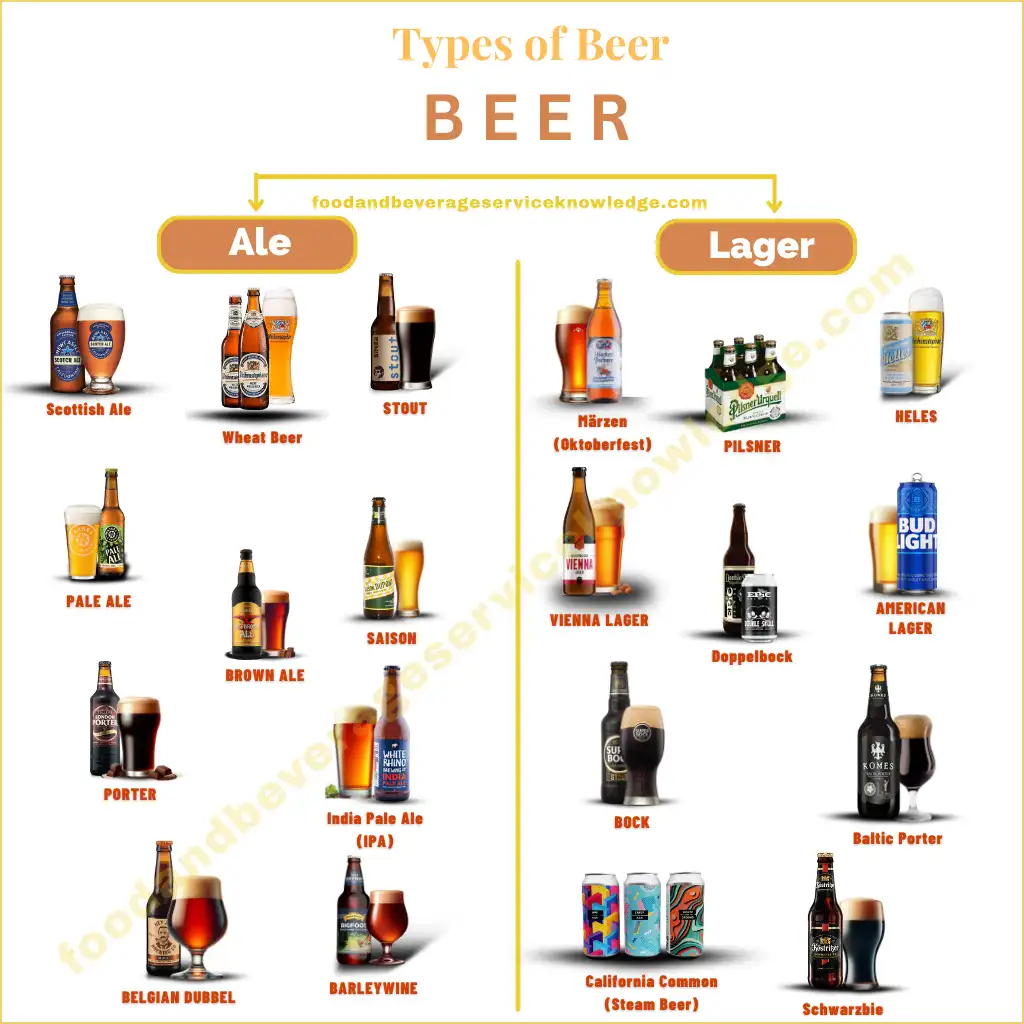
In this guide, we will explore the primary categories of beer, including ales and lagers, along with various styles such as hybrid beers, specialty beers, and sour beers.
Styles of Lager Beer
Lagers are brewed using bottom-fermenting yeast at colder temperatures, leading to a slow fermentation process that enhances clarity and drinkability. They typically have a milder aroma and a balanced bitterness compared to ales.
Their flavours range from light and crisp to dark and malty, depending on the ingredients and brewing methods used. Due to the extended conditioning period, lagers develop a smooth texture with refined flavours. Below are 10 key lager styles and their defining characteristics:
10 Styles of Lager Beer
1. American Light Lager

American Light Lager is a pale, highly carbonated beer known for its crisp and refreshing taste. It was introduced in the United States in the mid-20th century as a lower-calorie, easy-drinking alternative to traditional lagers. Brewed with adjunct grains like rice or corn, it has a mild malt flavour and a very light body.
This style focuses on smoothness and drinkability, with minimal hop bitterness. The brewing process emphasizes clarity, consistency, and extended cold conditioning for a clean finish.
- Examples: Bud Light, Miller Lite, Coors Light.
- Origin: United States, developed in the 1940s–1970s to cater to consumer demand for lighter beers.
- Appearance: Very pale straw colour with a crystal-clear body and a frothy, white head.
- Alcohol Content: Typically low (around 3.5%–4.2% ABV), making it a sessionable beer.
2. Pilsner

Pilsner is a light-bodied, golden lager known for its crisp, refreshing taste and pronounced hop bitterness. It originated in the city of Pilsen, Czech Republic, in 1842 when Bavarian brewer Josef Groll perfected a new lagering technique using pale malts and local Saaz hops.
This style revolutionised brewing, becoming the blueprint for many modern lagers. Pilsners are characterised by their balance of malt sweetness and floral, spicy hop bitterness, creating a clean and well-rounded flavour.
- Origin: Pilsen, Czech Republic, 1842.
- Appearance: Pale golden with brilliant clarity and a thick, white foamy head.
- Alcohol Content: Typically 4.5%–5.5% ABV.
- Examples: Pilsner Urquell, Bitburger, Victory Prima Pils.
Discover more about German Pilsner on Beer Advocate:
You’re heading to BeerAdvocate’s German Pilsner page, where you’ll find a detailed guide on its flavour profile, brewing style, and what sets this crisp, hop-forward lager apart.
3. Helles
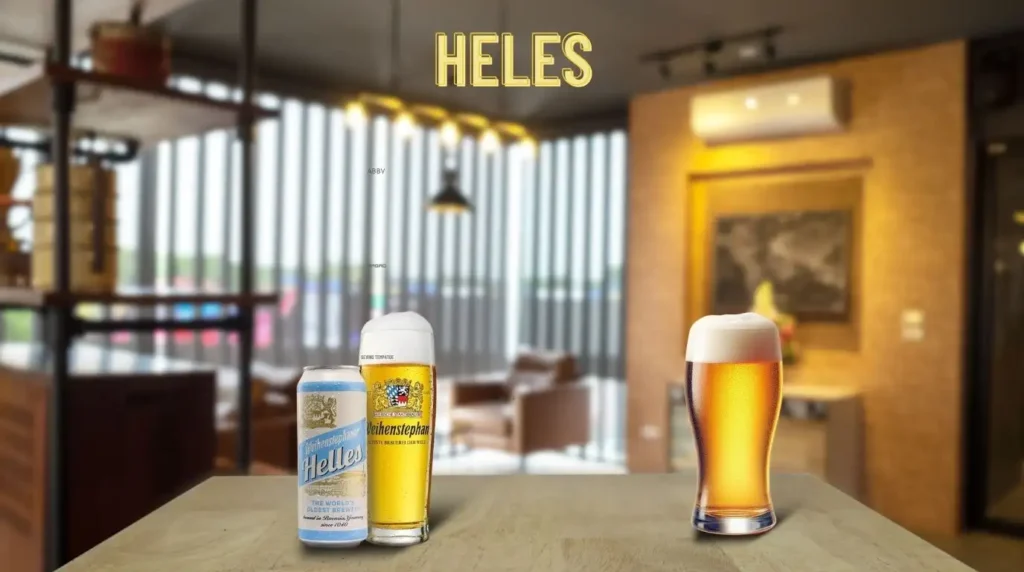
Helles is a balanced, slightly sweet German pale lager known for its smooth malt character and mild hop presence. It originated in Munich, Germany, in the late 19th century as a response to the growing popularity of Pilsner-style beers. Unlike Pilsners, Helles emphasises malt sweetness over hop bitterness, resulting in a softer, more rounded flavour. The name “Helles” means “bright” or “pale” in German, referring to its clear, golden appearance.
- Origin: Munich, Germany, late 19th century.
- Appearance: Pale golden with excellent clarity and a creamy white head.
- Alcohol Content: Typically 4.7%–5.4% ABV.
- Examples: Weihenstephaner Original, Paulaner Münchner Hell, Augustiner Helles.
4. Vienna Lager
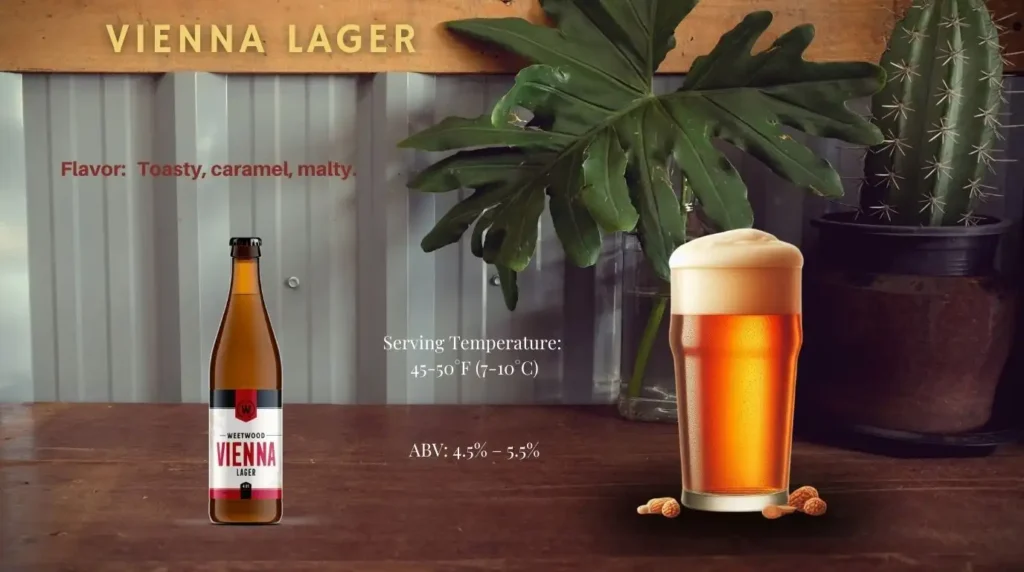
Vienna Lager is an amber-colored lager known for its toasty malt character and mild caramel sweetness. It was first brewed in Vienna, Austria, in the 1840s by Anton Dreher, who pioneered the use of pale malts in lager brewing. This style balances malt richness with moderate hop bitterness, creating a smooth and flavorful beer. Though its popularity declined in Europe, it found a resurgence in Mexico, where it influenced many well-known beers.
- Origin: Vienna, Austria, 1840s.
- Appearance: Deep amber to copper with a clear body and an off-white head.
- Alcohol Content: Typically 4.5%–5.5% ABV.
- Examples: Samuel Adams Boston Lager, Negra Modelo, Devil’s Backbone Vienna Lager.
Explore more on beer: How Beer Is Made: A Step-by-Step Guide to the Brewing Process
5. Märzen (Oktoberfest)
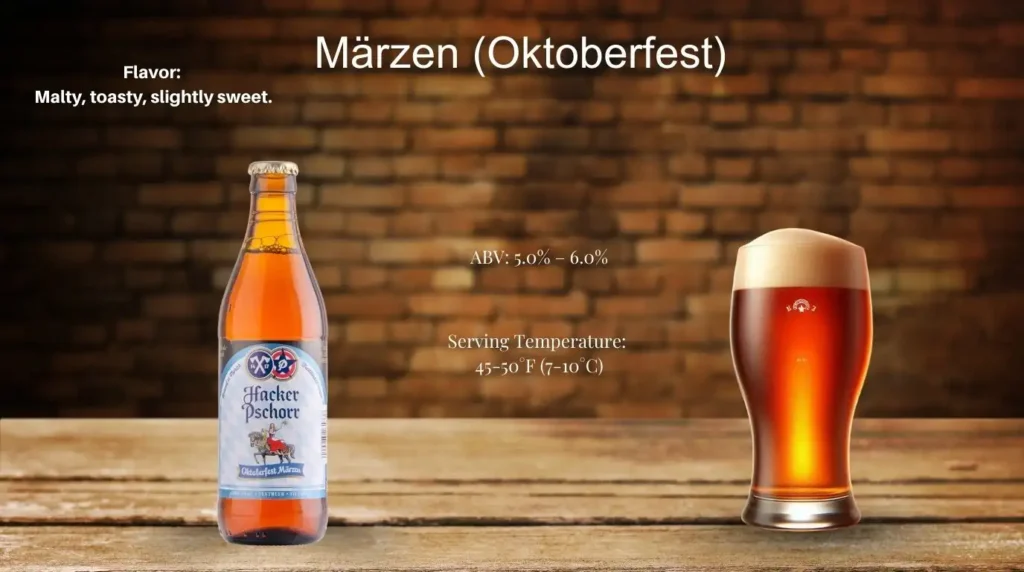
Märzen is a medium-bodied, malty lager traditionally brewed for Oktoberfest celebrations. Originating in Bavaria, it was historically brewed in March (“März” in German) and lagered through the summer to be enjoyed in the fall. Märzen features a rich malt flavour with a clean, smooth finish, making it a signature beer of German beer culture.
- Origin: Bavaria, Germany, 16th century.
- Appearance: Deep amber to copper with brilliant clarity and a thick, white head.
- Alcohol Content: Typically 5.0%–6.0% ABV.
- Examples: Paulaner Oktoberfest Märzen, Hacker-Pschorr Oktoberfest, Ayinger Festbier.
6. Doppelbock

Doppelbock is a strong, dark lager with intense caramel and toffee sweetness, originally brewed by German monks as “liquid bread” for sustenance during fasting periods. First developed in Bavaria in the 17th century, it is a richer and more robust version of traditional Bock beers, featuring a full-bodied malt profile with minimal hop bitterness.
- Origin: Bavaria, Germany, 17th century.
- Appearance: Deep amber to dark brown with a creamy tan head.
- Alcohol Content: Typically 7.0%–10.0% ABV.
- Examples: Paulaner Salvator, Ayinger Celebrator, Spaten Optimator.
7. Bock
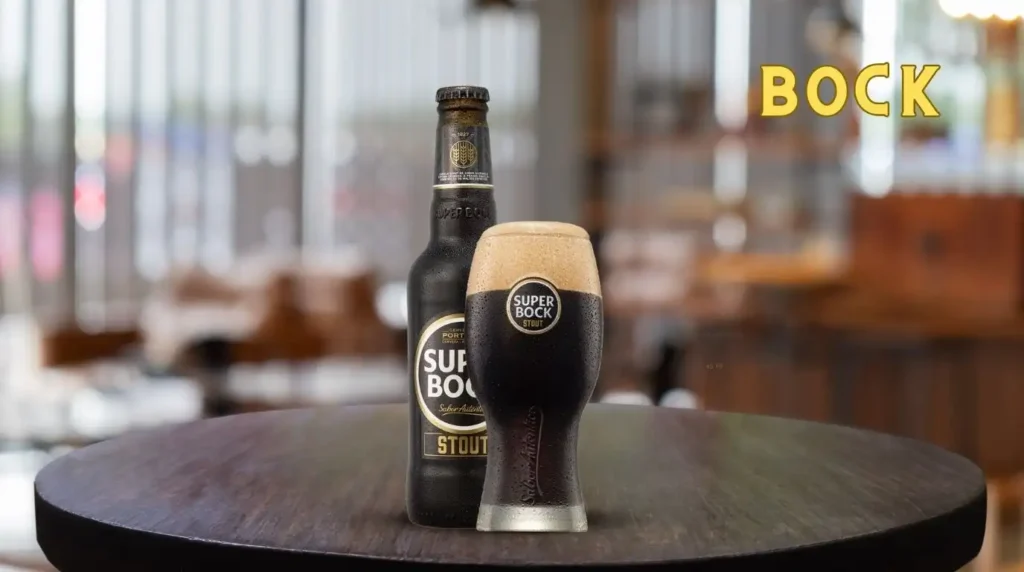
Bock is a full-bodied, smooth lager with a slightly sweet malt profile and low bitterness. It originated in the town of Einbeck, Germany, in the 14th century, before Bavarian brewers refined the style in the 17th century. Bocks are malt-forward, often featuring notes of caramel, bread, and nuts, with a clean lager finish.
- Origin: Einbeck, Germany, 14th century.
- Appearance: Deep amber to dark brown with a thick, off-white head.
- Alcohol Content: Typically 6.0%–7.5% ABV.
- Examples: Einbecker Ur-Bock, Shiner Bock, Ayinger Celebrator (Doppelbock variant).
8. Baltic Porter
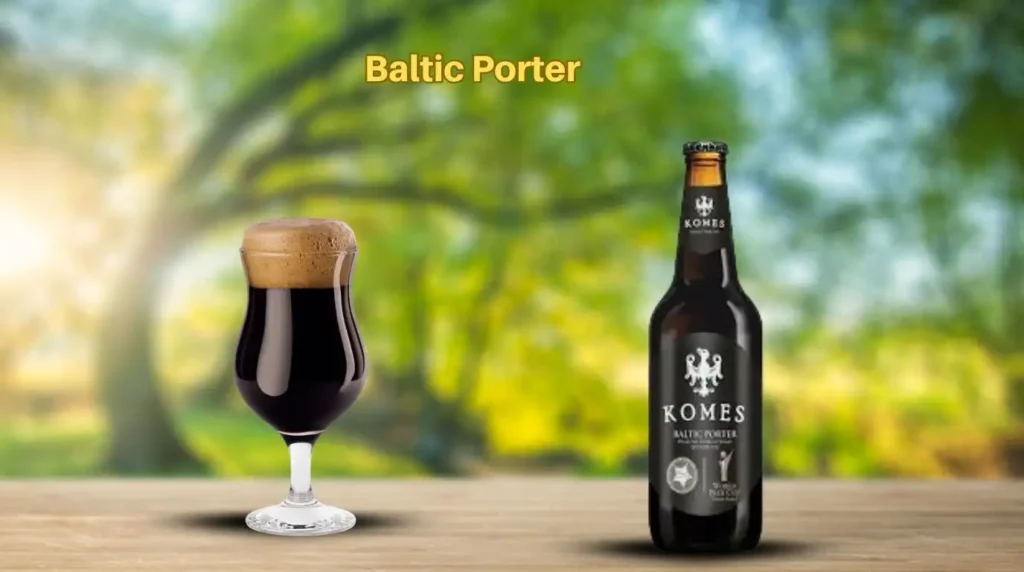
Baltic Porter is a dark, strong lager with roasted malt, chocolate, and coffee flavours. Unlike English Porters, which are top-fermented ales, Baltic Porters are brewed with lager yeast, giving them a smoother, cleaner taste. Originally developed in the Baltic region in the 18th century, these beers often feature higher alcohol content and complex dark malt flavours.
- Origin: Baltic region, 18th century.
- Appearance: Dark brown to black with a thick, tan head.
- Alcohol Content: Typically 7.0%–9.5% ABV.
- Examples: Zywiec Porter, Sinebrychoff Porter, Aldaris Porter.
9. Schwarzbier

Schwarzbier, meaning “black beer” in German, is a dark lager with mild roasted malt flavours and a crisp, clean finish. Unlike stouts or porters, Schwarzbier has a lighter body and subtle coffee or chocolate notes without overwhelming bitterness. It is one of the oldest German beer styles, dating back to the Middle Ages.
- Origin: Germany, Middle Ages.
- Appearance: Dark brown to nearly black with ruby highlights and a creamy tan head.
- Alcohol Content: Typically 4.4%–5.4% ABV.
- Examples: Köstritzer Schwarzbier, Samuel Adams Black Lager, Xingu Black Beer.
10. California Common (Steam Beer)
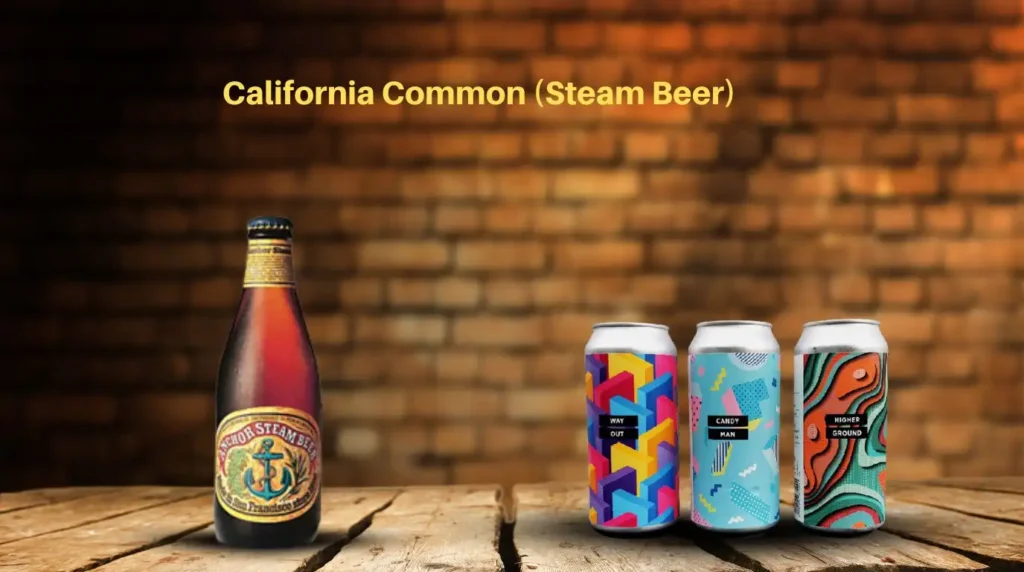
California Common, also known as “Steam Beer,” is a hybrid lager brewed at warmer temperatures, combining the malt richness of lagers with a crisp hop character. This style was pioneered by San Francisco’s Anchor Brewing in the 19th century, using lager yeast fermented at ale-like temperatures due to the lack of refrigeration. The result is a unique beer with caramel maltiness balanced by earthy hop bitterness.
- Origin: San Francisco, United States, 19th century.
- Appearance: Amber to copper with good clarity and an off-white head.
- Alcohol Content: Typically 4.5%–5.5% ABV.
- Examples: Anchor Steam Beer, Flying Dog Old Scratch, Steamworks Steam Beer.
Styles of Ale Beer
Ales are brewed using top-fermenting yeast at warmer temperatures, resulting in a faster fermentation process that develops complex flavours and aromatic characteristics. They tend to have a more pronounced malt and hop profile compared to lagers, often featuring fruity, spicy, or floral notes.
Ales can range from light and refreshing to dark and robust, depending on the ingredients and brewing techniques. Their diverse flavour profiles make them a versatile choice for various tastes. Below are 10 key ale styles and their defining characteristics:
10 Styles of Ale Beer
1. Pale Ale

Pale Ale is a medium-bodied beer known for its balanced malt sweetness and moderate hop bitterness. Originating in England in the 18th century, it was brewed using pale malts, giving it a lighter colour than darker ales of the time. The style has since evolved, with American versions featuring bolder hop flavours and citrusy notes.
- Origin: England, 18th century.
- Appearance: Golden to deep amber with good clarity and a white to off-white head.
- Alcohol Content: Typically 4.5%–6.2% ABV.
- Examples: Sierra Nevada Pale Ale, Bass Pale Ale, Fuller’s London Pride.
2. India Pale Ale (IPA)
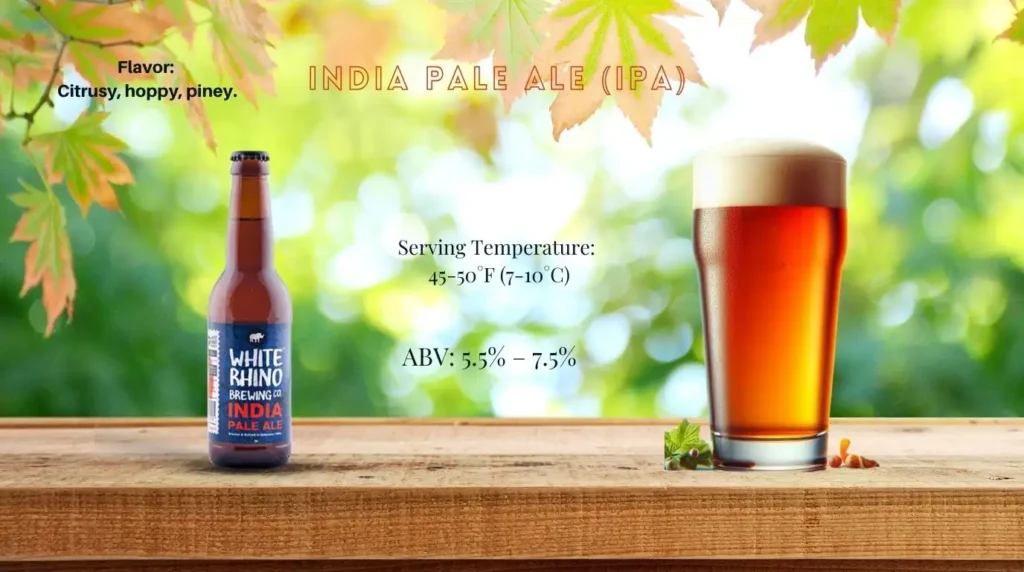
India Pale Ale (IPA) is a hoppy and bitter ale originally brewed in England in the 18th century for export to British colonies in India. Higher hop levels helped preserve the beer on long sea voyages. Today, IPAs come in various styles, including West Coast, New England (Hazy), and Double IPAs, each with distinct hop-forward profiles.
- Origin: England, 18th century.
- Appearance: Pale gold to deep amber, often hazy in modern variants.
- Alcohol Content: Typically 5.5%–7.5% ABV (stronger versions can exceed 8%).
- Examples: Bell’s Two Hearted Ale, Stone IPA, Dogfish Head 60 Minute IPA.
3. Stout

Stout is a dark, full-bodied ale known for its rich roasted malt flavours, including notes of coffee, chocolate, and caramel. Originally an offshoot of Porters, Stouts gained popularity in the 18th century, with variations such as Dry Stout, Oatmeal Stout, and Imperial Stout.
- Origin: England, 18th century.
- Appearance: Deep brown to black with a thick, creamy tan head.
- Alcohol Content: Typically 4.0%–10.0% ABV, depending on the substyle.
- Examples: Guinness Draught, Founders Breakfast Stout, Russian Imperial Stout.
4. Porter
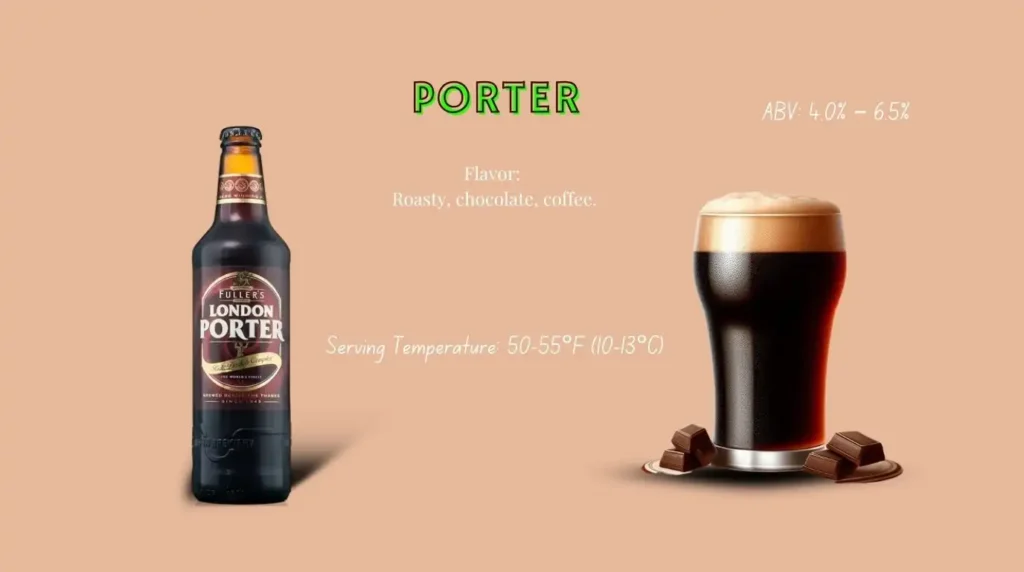
Porter is a smooth, dark ale with caramel and chocolate undertones, first brewed in 18th-century England. It was a popular beer among London’s working class, particularly porters, which inspired its name. Porters can vary from mildly sweet to robustly roasted, often overlapping with stout characteristics.
- Origin: England, 18th century.
- Appearance: Dark brown to black with a tan head.
- Alcohol Content: Typically 4.5%–6.5% ABV.
- Examples: Samuel Smith’s Taddy Porter, Deschutes Black Butte Porter, Anchor Porter.
5. Brown Ale

Brown Ale is a malty, nutty beer with mild caramel sweetness, originating in England. It is less roasted than Porters and Stouts, offering a more balanced, easy-drinking experience. American Brown Ales tend to be hoppier than their English counterparts.
- Origin: England, 17th century.
- Appearance: Amber to deep brown with good clarity and an off-white head.
- Alcohol Content: Typically 4.0%–6.5% ABV.
- Examples: Newcastle Brown Ale, Samuel Smith’s Nut Brown Ale, Sierra Nevada Tumbler.
6. Wheat Beer

Wheat Beer is a light, cloudy ale brewed with a high percentage of wheat, resulting in a smooth texture and refreshing, slightly fruity taste. German Weissbier and Belgian Witbier are two major styles, with American Wheat Ales offering their own take on the style.
- Origin: Germany and Belgium, centuries old.
- Appearance: Pale yellow to deep gold, often hazy.
- Alcohol Content: Typically 4.0%–5.5% ABV.
- Examples: Weihenstephaner Hefeweissbier, Hoegaarden, Allagash White.
7. Saison
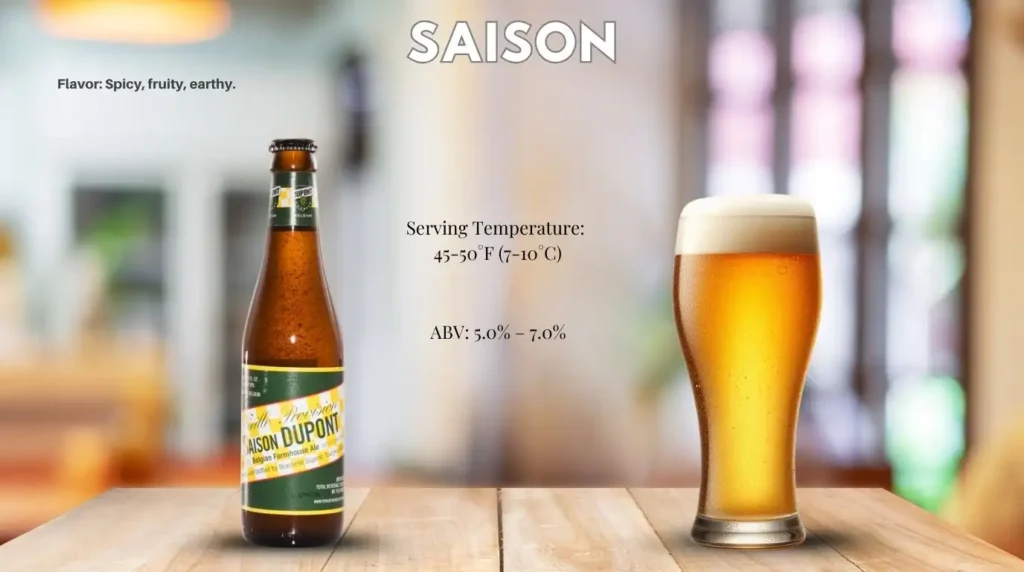
Saison is a spicy, fruity ale with a dry finish, traditionally brewed in farmhouses in Belgium for summer consumption. This rustic style is known for its complex yeast character, often featuring peppery, citrus, and floral notes.
- Origin: Belgium, historically brewed in Wallonia.
- Appearance: Pale gold to light amber with a frothy white head.
- Alcohol Content: Typically 5.0%–8.0% ABV.
- Examples: Saison Dupont, Boulevard Tank 7, The Bruery Saison Rue.
8. Belgian Dubbel
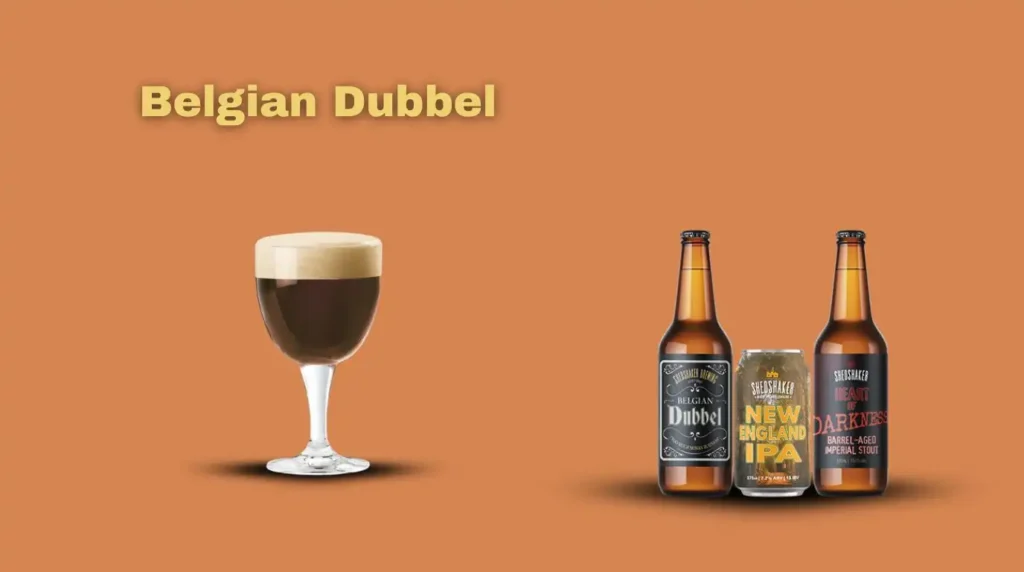
Belgian Dubbel is a dark amber ale with rich malt character, fruity esters, and spicy yeast notes. It was developed by Trappist monks in Belgium and remains a staple of monastic brewing traditions.
- Origin: Belgium, Trappist monasteries, 19th century.
- Appearance: Dark amber to brown with ruby highlights and a creamy tan head.
- Alcohol Content: Typically 6.0%–8.0% ABV.
- Examples: Chimay Red, Westmalle Dubbel, La Trappe Dubbel.
9. Barleywine

Barleywine is a strong, full-bodied ale with high alcohol content and intense caramel malt flavours. It originated in England as a high-strength alternative to wine, with American versions being hoppier than their British counterparts.
- Origin: England, 18th century.
- Appearance: Deep amber to dark brown with a thick, off-white head.
- Alcohol Content: Typically 8.0%–12.0% ABV.
- Examples: Sierra Nevada Bigfoot, Thomas Hardy’s Ale, Anchor Old Foghorn.
10. Scottish Ale
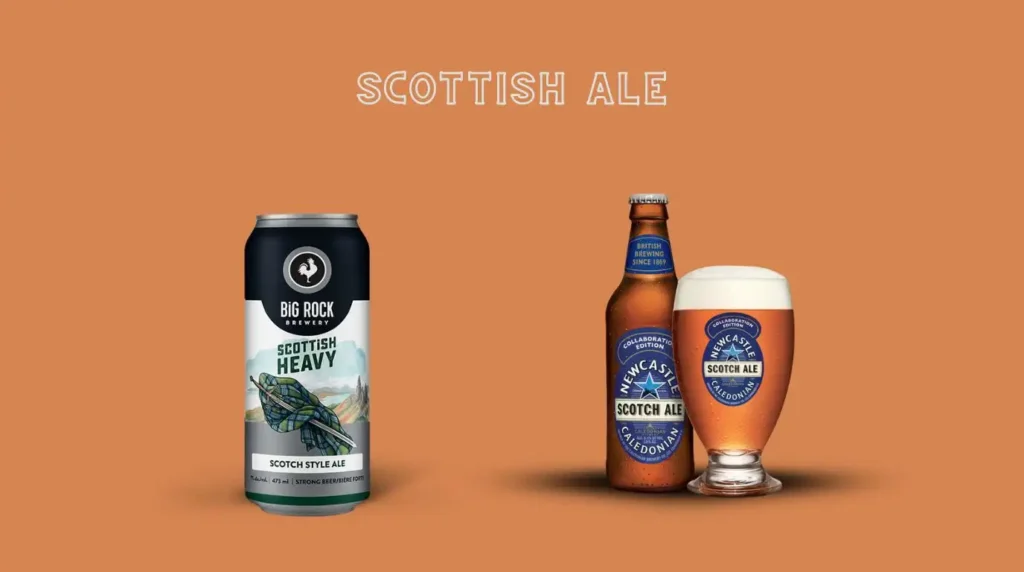
Scottish Ale is a malt-forward beer with a slightly sweet profile, often featuring caramel and toffee notes. Historically brewed in Scotland, these beers have low hop bitterness and emphasise malt complexity.
- Origin: Scotland, centuries old.
- Appearance: Deep amber to dark brown with ruby hues.
- Alcohol Content: Typically 3.5%–6.0% ABV (Stronger “Wee Heavy” versions exceed 7%).
- Examples: Belhaven Scottish Ale, Oskar Blues Old Chub, McEwan’s Scotch Ale.
Also Read:
Styles of Sour Beer
Sour beers are brewed using wild yeast and bacteria, resulting in tart, acidic flavours that range from mildly tangy to intensely sour. These beers often develop complex characteristics with fruity, funky, and sometimes spicy notes. The fermentation process can include spontaneous fermentation or controlled use of lactobacillus and brettanomyces. Many sour beers are aged in barrels, enhancing their depth of flavour.
Below are five key sour beer styles and their defining characteristics:
5 Styles of Sour Beer
- Berliner Weisse – Light, tart, and refreshing wheat beer with citrus-like acidity.
- Gose – Salty, slightly sour, with hints of coriander and citrus.
- Lambic – Spontaneously fermented, funky, with fruity and complex flavours.
- Flanders Red Ale – Deep red, vinous, with a balance of sweet malt and sour acidity.
- American Wild Ale – Varying levels of tartness, often aged in barrels for added complexity.
For a deeper dive into sour beer styles, fermentation processes, and their history, check out this detailed Wikipedia page on Sour Beer. It provides a comprehensive overview of the various types and their distinctive sour flavours.
Hybrid Beers and Specialty Styles
Hybrid Beers
Hybrid beers combine elements from different beer styles, merging characteristics of ales and lagers or integrating diverse fermentation techniques. These beers may be brewed with a mix of yeast strains or undergo unconventional fermentation processes, leading to distinctive and complex flavour profiles.
- Sour IPA – A fusion of hoppy bitterness and tart acidity.
- California Common (Steam Beer) – A lager brewed at warmer temperatures, developing ale-like fruitiness.
- Kölsch – A hybrid between ale and lager, fermented warm but conditioned cold.
- Altbier – A German-style ale fermented cooler, resembling some lager characteristics.
Specialty Beers
Speciality beers stand out due to unique ingredients, brewing methods, or ageing processes, often pushing the boundaries of traditional beer styles. These beers may include added spices, fruits, barrel ageing, or experimental brewing techniques.
- Imperial Stouts – Rich, dark, and high in alcohol, often with flavours of chocolate and coffee.
- Fruit Beers – Brewed with real fruit to enhance aroma and taste.
- Barrel-Aged Beers – Aged in wooden barrels to absorb unique flavours.
- Spiced and Herb Beers – Infused with botanicals like coriander, cinnamon, or ginger.
- Saison/Farmhouse Ales – Rustic, fruity, and spicy with a dry finish.
Conclusion
Beer is an incredibly diverse beverage, with styles ranging from crisp lagers and complex ales to tangy sour beers and innovative hybrid brews. Each category has unique characteristics shaped by fermentation techniques, ingredients, and brewing methods. Understanding these styles helps in appreciating the depth of flavours and selecting beers that match personal preferences. Whether exploring traditional styles or speciality creations, the world of beer offers endless possibilities for discovery and enjoyment.
Also Read:
This article was written by Saswata Banerjee, the creator of Food and Beverage Service Knowledge, based on 8+ years of experience in the hospitality industry.

